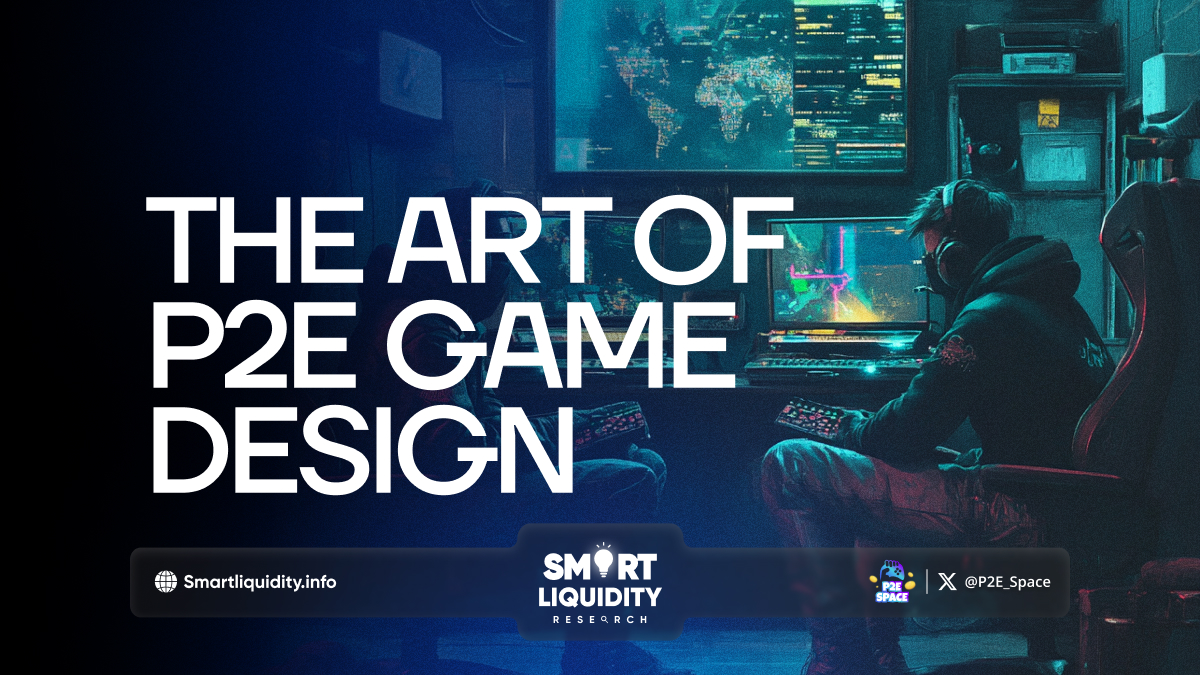The Art of P2E Game Design


The Play-to-Earn (P2E) gaming model has taken the world by storm, offering players the chance to earn tangible rewards for their time and effort. But what goes into designing a successful P2E game? It’s more than just merging traditional gaming mechanics with blockchain technology—it’s about creating an experience that balances gameplay, community, and reward systems in a way that feels both seamless and rewarding. Here’s a look at the art behind designing a P2E game that not only entertains but engages players on multiple levels.
1. Gameplay First, Earning Second
At the heart of every successful game lies great gameplay. P2E games that prioritize enjoyment before rewards often fare better because they build a loyal community. The earning aspect, while crucial, should feel like an added benefit to an already fun experience. The game should offer compelling mechanics, engaging narratives, and immersive worlds that keep players coming back, not just for the rewards, but for the joy of playing.
Consider games like *Axie Infinity* and *The Sandbox*, where players are engrossed in strategy, exploration, or world-building. These experiences hook players long before they begin to focus on earnings. For a designer, understanding what makes gameplay intrinsically rewarding is the first and most important step.
2. Economy Design: Sustainable and Fair
The backbone of any P2E game is its economy. Poorly designed economies can lead to inflation of in-game assets, devaluation, or worse, a complete collapse of the ecosystem. A well-thought-out economy balances the inflow and outflow of resources, ensuring both new players and veterans feel the system is fair.
Designers need to implement tokenomics that reward effort but prevent exploitation. For instance, players should earn tokens through skill, time, and effort, while the burn mechanisms (ways to spend or use tokens) must create value without destabilizing the ecosystem. A common strategy is to integrate limited-time events or exclusive assets that add excitement and demand without overwhelming the economy.
3. Building a Strong Community
P2E games thrive on their community. Game designers must create features that encourage collaboration, competition, and social interaction. This includes guilds, multiplayer challenges, in-game events, and active social media engagement.
By cultivating a strong player base, you create organic growth. Players become ambassadors of your game, bringing in new users through word of mouth and social platforms. Fostering this connection is crucial, whether through Discord servers, special events, or even in-game voting on key updates.
4. Designing for Longevity
A challenge in the P2E space is ensuring longevity. Trends in gaming come and go, and with P2E, there’s an added layer of economic risk. The key to overcoming this is adaptability. Game designers should plan for updates, expansions, and new features to keep the ecosystem dynamic.
Designing for the future also means ensuring that the blockchain or underlying technology is scalable. As player numbers grow, the infrastructure must keep up with demand without compromising gameplay or the user experience.
5. Transparency and Trust
In the decentralized world of blockchain, transparency is paramount. Players want to know how the game operates, from its earning potential to its governance. By implementing clear and understandable mechanics, along with transparent communication from the development team, trust is built within the community.
P2E games should also empower players through decentralized governance. Giving players the ability to vote on game updates or economic changes enhances their stake in the game’s success, making them feel like true stakeholders rather than passive participants.
6. Balancing Free-to-Play and Pay-to-Earn
One of the most critical aspects of P2E design is making the game accessible to everyone. The rise of P2E has seen a potential barrier to entry for players who don’t want to invest upfront in expensive NFTs or tokens to participate. A well-designed game allows free-to-play players to enter without monetary investment, while still providing earning opportunities.
This doesn’t mean free players should earn at the same rate as those who invest, but they should be able to experience meaningful gameplay, slowly progress, and eventually earn enough to become more competitive if they choose. Offering both free and pay-to-earn pathways ensures a more inclusive community and prevents a paywall from alienating new players.
Gods Unchained, for example, offers players free starter decks while still allowing them to earn rewards as they progress, giving them a taste of the competitive and earning aspects of the game before committing financially.
Conclusion: The Balance of Play and Earn
Creating a P2E game is a delicate art. It’s about balancing engaging gameplay with fair earning mechanics, building a sustainable economy, and fostering a passionate community. As more developers explore this space, the successful ones will be those who understand that at the end of the day, players want to have fun first—and earn second. That’s the secret behind great P2E game design.




